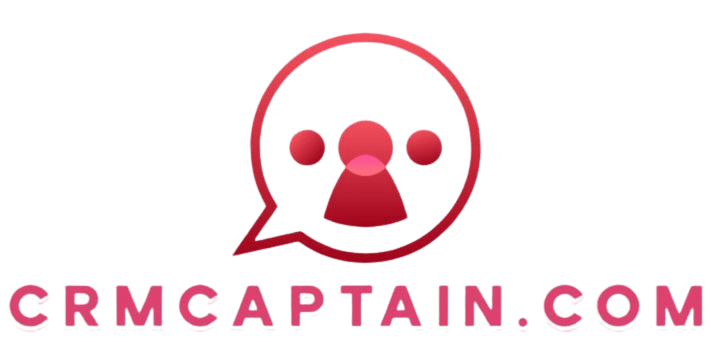How to Manage CRM Integrations Effectively
In today s fast-paced business landscape, effective customer relationship management (CRM) is not just important; it’s essential for your success. Let s dive into how you can harness CRM integrations for your business success!
By integrating CRM systems, you can enhance your workflows, boost efficiency, and gain a comprehensive view of your customer interactions. However, navigating the complexities of these integrations can present challenges that may feel daunting.
This article delves into the essentials of CRM integration, highlighting its benefits, common obstacles, best practices, and ways to ensure data security. Whether you’re contemplating a new CRM system or looking to optimize your current setup, these insights will empower you to make informed decisions that drive your business forward.
Contents
- Key Takeaways:
- Understanding CRM Integrations
- Benefits of CRM Integrations
- Common Challenges with CRM Integrations
- Best Practices for Managing CRM Integrations
- Choosing the Right CRM Integration
- Ensuring Data Security and Privacy
- Frequently Asked Questions
- What is a CRM integration and why is it important to manage it effectively?
- What are some common challenges faced in managing CRM integrations?
- How can I ensure successful management of CRM integrations?
- What are some best practices for managing CRM integrations effectively?
- Can CRM integrations be managed automatically?
- What steps should I take to troubleshoot any issues with CRM integrations?
Key Takeaways:

Integrate your CRM with other systems to streamline processes.
Evaluate and plan to overcome CRM integration challenges.
Implement strong data security measures during CRM integrations.
Understanding CRM Integrations
Understanding CRM integrations means comprehending how customer relationship management (CRM) systems seamlessly connect with third-party applications and integration tools. This connection enhances data synchronization and how well your business runs.
For businesses using popular CRM solutions like HubSpot and Salesforce, these integrations are essential. They facilitate streamlined workflows, elevate customer interactions, and improve data accuracy. Ultimately, this leads to better customer experiences and more effective business processes.
What is CRM Integration?
CRM integration involves connecting your customer relationship management software with other applications and systems to streamline data flow and enhance automated workflows. This integration also ensures that your customer data remains consistently updated across various platforms, leading to improved accuracy and accessibility.
With multiple departments interacting seamlessly with the same core information, you are better equipped to manage customer relationships effectively. A key element of this process is the use of APIs, which are tools that help different software programs communicate with each other. APIs facilitate smooth communication, allowing your tools to share essential insights and data in real time.
This optimizes customer data management and refines your overall business strategies, making everything run like a well-oiled machine.
Benefits of CRM Integrations
CRM integrations provide a wealth of advantages that can profoundly elevate your operational efficiency, streamline sales automation, and refine your marketing strategies. For more insights on integrating CRM with existing systems, this means more meaningful interactions and happier customers!
Streamlining Processes and Improving Efficiency
Streamlining your processes through CRM integration can yield significant efficiency gains across various business functions, empowering you to manage resources better and optimize workflow automation.
By uniting disparate systems, your teams can collaborate more effectively, leveraging tools like Slack or Microsoft Teams that integrate seamlessly with CRM platforms. This integration facilitates real-time communication and collaboration on projects, enabling faster decision-making and boosting productivity.
Utilizing data analysis within these integrated systems allows you to identify bottlenecks in the workflow, offering insights that drive continuous improvement. For instance, analyzing customer interactions can uncover patterns that help your teams refine their outreach strategies, ultimately enhancing client satisfaction and loyalty.
Emphasizing the synergy between CRM systems and collaboration tools is essential for driving efficiency in today s fast-paced business environment.
Common Challenges with CRM Integrations

While CRM integrations can elevate your business operations, you may encounter common challenges. Issues like data accuracy and the complexity of various integration methods often arise, especially when considering the evolution of CRM and its integrations during implementation.
These challenges require careful navigation to ensure a seamless transition.
Identifying and Overcoming Obstacles
Identifying and overcoming obstacles in CRM integration requires recognizing potential pitfalls in data management and adopting effective strategies to address them, as outlined in the impact of CRM integrations on user experience.
These challenges often present themselves as data discrepancies, where different systems may store conflicting customer information, and user resistance, as team members might be hesitant to embrace new processes.
To successfully navigate these hurdles, conduct a thorough analysis of existing data, pinpointing inconsistencies and establishing harmonized records. Fostering open communication and involving users in the integration process can greatly ease resistance.
Encouraging feedback and providing adequate training are vital steps in this journey. Implement performance measurement tools to assess your integration success, ensuring that obstacles are addressed proactively and efficiently.
Best Practices for Managing CRM Integrations
Effectively managing CRM integrations requires following best practices for smooth connections, automated actions, and using CRM integrations to drive sales growth within your organization’s technology stack.
By prioritizing these elements, you can enhance operational efficiency and drive meaningful engagement across all channels.
Key Strategies and Tips
Implementing effective CRM integration involves key strategies and tips designed to enhance your use of software tools, ultimately streamlining your workflow with CRM integrations and leading to better management of customer interactions.
It’s essential to choose the right software and ensure it aligns perfectly with your business’s specific needs. For example, integrating analytics tools can unlock deeper insights into customer behavior, empowering you to tailor your approach accordingly.
Training your staff on these tools is equally vital; well-informed employees can leverage the software s capabilities more effectively. Regularly assess and update your CRM system to accommodate evolving business objectives and changing customer expectations.
By concentrating on these strategies, you can significantly enhance customer experiences, fostering loyalty and driving growth for your organization.
Choosing the Right CRM Integration
Selecting the ideal CRM integration requires thoughtful consideration of multiple factors and a comprehensive evaluation process, especially when exploring the top CRMs for seamless integrations.
It’s essential to ensure that it aligns seamlessly with your business goals and helps customers succeed.
Factors to Consider and Evaluation Process

When evaluating CRM integrations, consider several key factors, such as how well data can be shared between systems and the benefits of CRM API integrations with your existing systems.
Make scalability a top priority to adapt to your evolving business needs. A user-friendly interface is equally important; it can greatly enhance team adoption and reduce training time. Don t overlook support options, either. Access to quality customer service and training resources is vital for addressing any issues that may arise quickly and efficiently.
To help you navigate the evaluation process systematically, consider following these steps:
- Define your specific requirements.
- Research potential CRM solutions.
- Conduct product demos.
- Review customer testimonials.
- Analyze pricing models to identify the best fit for your unique operations.
Ensuring Data Security and Privacy
Act now to protect sensitive customer information. Ensuring data security and privacy is essential in CRM integration. As you manage sensitive customer information, implementing robust integration strategies becomes critical to safeguarding that data effectively.
Protecting Sensitive Information
Protecting sensitive information in your CRM integration requires strong security practices that meet industry standards for data management. This includes using encryption, which is a method that keeps data safe by converting it into a code, to protect data both at rest and in transit.
Access controls are critical. They ensure only authorized personnel can view or manipulate sensitive information, reducing the risk of data breaches.
Organizations must prioritize privacy laws such as GDPR and CCPA. This commitment shows clients that their data is protected.
Fostering awareness and training employees strengthens secure practices. Ongoing monitoring and improvements are vital to adapt to new threats.
Frequently Asked Questions
What is a CRM integration and why is it important to manage it effectively?
A CRM integration connects a customer relationship management system with other software. This connection streamlines data flow, improves efficiency, and helps manage customer relationships better.
What are some common challenges faced in managing CRM integrations?

Common challenges include software compatibility issues and complex data mapping. Managing multiple integrations can also be difficult, especially when keeping up with updates.
How can I ensure successful management of CRM integrations?
To manage CRM integrations successfully, understand your business needs. It’s crucial to have a dedicated team or individual to oversee these integrations and consider leveraging CRM integrations for better insights.
What are some best practices for managing CRM integrations effectively?
Best practices include selecting the right tools, regular maintenance, and establishing clear communication among all parties. It’s also important to document processes and prepare contingency plans.
Can CRM integrations be managed automatically?
Yes! Automation tools can manage CRM integrations, streamlining data flow and reducing manual tasks.
What steps should I take to troubleshoot any issues with CRM integrations?
If you encounter issues, check for updates in your tools first. Then, troubleshoot by examining data mapping and testing various scenarios.






